Transcript Zero Episode 18: How Carbon Offsets Went Wrong
(Bloomberg) -- For Episode 18 of the podcast, Bloomberg Green reporter Akshat Rathi interviews Mark Trexler, who helped build the first carbon offset program in 1988, about why the $2 billion offsets industry is still struggling to support climate action that’s actually effective. Listen to the full episode below, learn more about the podcast here, and subscribe on Apple, Spotify, and Google to stay on top of new episodes.
Akshat Rathi 00:00
Welcome to Zero, I’m Akshat Rathi. This week: Labradoodles, carbon offsets and the emperor's new clothes.
Akshat Rathi 00:20
Think of the last time you bought a plane ticket, and the airline offered you the opportunity to spend some more money to offset the emissions from your trip. If you didn't take it, you did right. That offer is part of a market known as the voluntary carbon market, worth $2 billion today. It hasn't really proved to work. It's a place where you and companies like Shell can buy credits from projects such as a solar facility in a developing nation that in theory, will avoid putting carbon into the atmosphere. At face value, these offsets might seem like a good thing. We want more solar plants. But the difficulty is in proving whether paying for these offsets was the reason the solar plant was built. Many of these green projects would have gone ahead anyway and thus, your offset has not really provided any additional carbon benefit.
It is why experts have pointed out that most of the credits on the current voluntary carbon market don't work. Still, as more companies sign up for net zero plans, rather than actually reducing emissions, they find it easier to buy cheap offsets instead. And the voluntary carbon market will get a boost because it's receiving a stamp of approval from the US government itself. At COP27, the US Special Presidential Envoy for Climate, John Kerry, announced a new offsets program that will help developing countries transition to clean energy through purchases made by big corporate polluters. This was an unenviable task, especially in front of a global audience of environmental experts. You hear him acknowledge this throughout the conference.
John Kerry US Pavilion Speech Montage 01:57
Unfortunately, some past abuses have in many minds discredited the use of a carbon credit…
… No double counting, no greenwashing…
… We shouldn't let the mistakes of the past keep us from employing a powerful tool for steering private capital where it is most needed.
Akshat Rathi 02:18
What Kerry is getting into is a market that's been around for more than 30 years. And it's full of trouble. The first carbon credit project was created in 1988. And the man who created it was Mark Trexler, my guest today.
Mark Trexler 02:31
This is a commodity that you can't see, you can't smell, you can't feel. And unless you're very careful with how you manage that commodity or regulate that commodity, you really are just selling a lot of Emperor's invisible clothes. But a lot of people have a lot of money at stake in doing just that.
Akshat Rathi 02:51
Mark is not a fan of what carbon offsets have become. And he is in a top position to explain why they don't work. That's important, because the US and many giant corporations are doubling down on offsets as a solution. I spoke with Mark this summer for an article about the bogus offsets that companies buy so that they can claim to be carbon neutral, and to learn if there's anything that can be done to fix them. How did a good idea go so wrong?
Akshat Rathi 03:29
Mark, welcome to Zero.
Mark Trexler 03:31
Thanks very much.
Akshat Rathi 03:32
Before we even start talking about carbon, let's break down the idea of what an offset really is. And where that idea came from.
Mark Trexler 03:41
Well, an offset is basically the idea that instead of installing an expensive piece of equipment to control pollution on your power plant, you could do something somewhere else that would have the same impact. And so you would save the money of the expensive technology that you might otherwise have to attach to your power plant. And this got started with the sulfur dioxide program in the United States. The term now is pretty widely used for sort of compensation of something you're doing in one place by something you're doing someplace else that is supposed to negate it.
Akshat Rathi 04:21
And given how big the market for offsets has become, is likely to become, and that more and more people are going to come across the usage of offsets in some way — already people are being hocked buying offsets when they buy their plane tickets. It's fascinating to know the history and you've been there from the very start. But I do want to ask you a very blunt question at this point. Do you regret participating in this industry that has not really helped the climate agenda?
Mark Trexler 04:54
This is sort of like the recent inventor of the Labradoodle apologizing to the world for inventing Labradoodles. And all of the other doodles because it's become a Frankenstein in the dog world. When this first started, this was a great idea. And carbon offsets were a way of getting electric utilities to talk about climate change and tackle climate change, before regulation was on the table. Once you start doing carbon offsets, it becomes a lot harder to deny climate change. And so I don't regret being involved in it at that point. But no one ever envisioned the idea that voluntary carbon offsets were going to be the way that we solved climate change, which is what we're talking about today. And what a lot of people are saying today, that was never part of the conversation.
Akshat Rathi 05:46
And you were there when the first carbon offset project was created in 1988? How did you get involved?
Mark Trexler 05:54
I was hired into the World Resources Institute to develop the methodology for that project, which was literally the first carbon offset project entirely, voluntarily done. And WRI had selected this agroforestry project in Guatemala before I was hired in. And so that's then the project that we proceeded with, and did a number of others with AES after that.
Akshat Rathi 06:17
Now, what is AES? And why were they interested in carbon offsets at all?
Mark Trexler 06:23
Well, AES was a small company at the time, an independent power producer. Applied Energy Services is what they were called at the time. They were headed up by Roger Sant. And he directed AES, for many, many years. And he was already concerned about climate change. He knew that building a coal fired power plant was not ideal. But in his view, and the numbers certainly bore this out at the time, there wasn't anything else he could build to generate power, given the laws and the rules and the economics in the US in terms of his business model. And his business model was small power plants, they ended up being coal fired power plants, and gas fired power plants. And he came up with the idea or went to the WRI for help with the question of, what can I do to sort of make sure that I'm not having a damaging impact on climate change? And that's how the idea of carbon offsets was born.
Akshat Rathi 07:28
Now, the idea of offsets which the word offset itself came earlier into the lexicon, and had been used for sulfur emissions. Did the CEO of AES just turn around and say. Well, they've done it for sulfur? Why not do it for carbon?
Mark Trexler 07:44
I don't think he went in with any preconceptions. But he went in and said, I'm building these power plants, they're going to emit carbon dioxide. Is there something we can do?
Akshat Rathi 07:57
John Kerry was active at this time, too, he helped lay the foundation for using market mechanisms to offset pollution. It started with sulfur emissions from coal plants, which contributed to acid rain, and the market solution was to create a cap and trade system.
John Kerry Conversation with John Mickelthwaitt 08:11
I led the fight in the 1980s when I was chairman of a governor's task force as a non-governor, Lieutenant Governor. And we put together the acid rain response. And that's when cap and trade was born, because we took it from the American Enterprise Institute, [a] conservative entity, which had designed a market-based solution to the problem of sulfur. And guess what it worked, you don't hear about acid rain now.
Akshat Rathi 08:38
Back to Mark of the 1980s. WRI teamed up with a relief group called CARE that was already operating in Guatemala to see if they could set up a carbon offset program.
Mark Trexler 08:49
And so the AES money went to CARE to expand the work of CARE in agroforestry. You know, this involves helping landowners put in hedgerows and putting together small tree farms to come up with huge numbers of seedlings that could be planted on the land. So it tried to build a whole economy in rural Guatemala around reforestation integrated into the agricultural system. And the methodology that I ended up developing was that the carbon sequestration wasn't based on the agricultural systems, it was based on protecting the natural forest that otherwise would have been cut down, as these farmers had to abandon their lands in one place as they got depleted and move into new lands.
Akshat Rathi 09:43
So what does the methodology for a carbon offset project really entail?
Mark Trexler 09:48
Well, the methodology that I developed for that project by today's standards would be seen as laughable. So you know, I did some calculations, I made some assumptions. I wrote it all up in a very nice way… methodologies today for almost any kind of project, there are a whole bunch of things they have to address. There are all sorts of tests for additionality. And you have to discuss permanence and you have to discuss leakage. You know, none of that existed for the first methodology. But the basic idea behind the methodology is to say, here's a project, whether it's agroforestry, whether it's cookstoves, whether it's energy efficiency, here is how it's going to reduce or remove carbon emissions. And here is how we're going to measure the difference between what would have happened otherwise, the baseline, and what happens with the project, and how we're going to calculate the difference between those two, which is the number of offset credits that that project is then allowed to sell.
Akshat Rathi 10:59
Could you explain those three terms? Additionality, permanence and leakage.
Mark Trexler 11:05
Right, these terms came out of law that already existed in the US for other pollutants regulated by the Environmental Protection Agency. And so we took several of the terms from those rules and applied them to the idea of carbon offsets. And the three really key criteria for what makes a legitimate carbon offset are additionality, permanence, and leakage. Because what's happening with an offset is you're in effect, permitting a ton of CO2 to be emitted in one place. That's what the offset is, at least in principle, making possible. So the characteristics of the offset have to be such that you're compensating for the real characteristics of the tonne that has now been emitted. And so you have to be doing something that wouldn't have otherwise happened. You have to do something that is quote, unquote, permanent because the ton that's being emitted is going to be in the atmosphere for one to 200 years. So for example, if you're putting a fence around a forest to protect that forest, that might be additional, because it wouldn't have been otherwise protected. It might be permanent, if you assume that you can permanently protect that forest. But all the pressure that there would have been to exploit that forest, hasn't that just gone someplace else? And if it is exploiting forests someplace else, then the carbon benefit of that first project to protect the forest is leaking.
Akshat Rathi 12:37
And then after you go home, what happens to carbon offsets? Do you think that you're going to keep hearing about them because other people would adopt this idea?
Mark Trexler 12:47
The popularity of carbon offsets grew rapidly. For example, electric utilities in the United States, especially coal-fired electric utilities. They anticipated that their greenhouse gas emissions would be regulated by the mid 1990s. Of course, they were off by decades. But they were very interested and very motivated to try and come up with alternatives to being forced to directly reduce their emissions because they had no idea how they were going to do that. And so within three or four years, you had all kinds of companies doing all kinds of projects to sort of test out the idea of offsets. And after that offsets got integrated into pretty much every policy proposal to tackle climate change at the federal level in the US. And then they took on a life of their own at international fora.
Akshat Rathi 13:43
And was there any skepticism about carbon offsets during that period?
Mark Trexler 13:48
The skepticism did start to arise relatively early. And it was quite active, for example, around the period of the Kyoto Protocol.
Akshat Rathi 14:03
Were you there, by the way?
Mark Trexler 14:05
I was in Kyoto, I was not in the negotiating room because I was not part of a delegation. But there were a lot of us in terms of the nongovernmental organizations, there were hundreds of us, you know, milling around the conference center all night, waiting for the people in the negotiating room to try and come to a final document. So people knew that there would be market mechanisms, they knew there would be offsets, but there was some real concern in the environmental community at the time – parts of the environmental community. So you had some parts of the environmental community, the groups that were out doing work in the field, they saw offsets as a way of funding their activities. And this this would be the CAREs, the Rainforest Action Coalition, The Nature Conservancy, but you did see other environmental groups that were very concerned that forestry would take over and swing the market away from from the energy side where they thought a lot more attention needed to be delivered and distort the overall effort at mitigating climate change.
Akshat Rathi 15:11
So let's talk about the Kyoto Protocol, which was, you know, first agreed upon in 1997. But what was the goal when the Kyoto Protocol was being discussed? And how did offsets become a part of it?
Mark Trexler 15:24
Well, the Kyoto Protocol is a protocol to the United Nations Framework Convention on Climate Change, which had been approved earlier. It didn't place mandates on anyone to do anything in particular, it was more of a rhetorical document, you could say. The Kyoto Protocol was specifically intended to give some keys to the UNFCCC. And so the Kyoto Protocol said, we have annex one countries, these are basically industrialized countries, they will have a treaty-based mandatory obligation to reduce their emissions from a historical baseline; we have developing countries – annex two countries, they will have an obligation to at least report on their emissions, etc., with the idea that they eventually start reducing their emissions and carbon offsets and market mechanisms generally, because there were a couple of different kinds – joint implementation and the clean development mechanism, were a way to tell the industrialized countries, this won't be as expensive as you think, because you can buy these credits. And you could tell the developing countries, you're getting something for this because a lot of money will flow to these projects in your countries. So the idea of these market mechanisms was quite key to the final structure of the Kyoto Protocol.
Akshat Rathi 16:50
Now, that sounds ideal, right? It would be great to find a way in which wealthy countries could transfer some of their wealth to developing countries and help developing countries not tap into the fossil fuels that really powered the developed countries to be developed and put all these emissions into the atmosphere. And what you're describing, with the use of offsets there, is in some way, this acknowledgment from the developed countries, that perhaps the goals of reducing emissions, that they are setting themselves up for, may be too stringent and they needed a way out and carbon offsets provided this way out.
Mark Trexler 17:30
The real challenge with carbon offsets, since the very beginning, is that carbon offsets are trying to do two different things. And to some extent, those things are potentially contradictory. The first is mitigate climate change more cost effectively, the other real motivation and driver is to reduce the cost to the companies or the countries for complying with whatever the rules end up being. And so “let's make this as low cost as possible.” That ends up being the driver that gets the biggest seat at the table, as opposed to, “let's make sure this is actually mitigating climate change.” There are far fewer people at the table, trying to push that point. And unfortunately, the cost containment has effectively won out.
Akshat Rathi 18:23
And you made this point that when you first started on this journey, and you saw the idea flourish, there was a sense of, offsets will eventually go away. But now you're talking about the Kyoto Protocol, and you're seeing all these countries wanting to adopt it more. It's getting further entrenched into the system, rather than going away. What happened?
Mark Trexler 18:45
You know, if all the countries of the world have all these policies in place to reduce emissions and encourage carbon sequestration, there is no room for an offset market, because an offset market is dependent on a supply of offsets from sectors that otherwise aren't regulated or capped in any way. And so I think most of us would have assumed and probably still do assume that if we really were serious about climate change, we would be using public policies and measures to make that happen. People have become so frustrated with the lack of policy action on climate change, that they're willing to grasp it almost any straw, carbon offsets is one of those straws, and, you know, it is not going to work but it gives people a sense that we're doing something when we don't seem to really be willing to do very much
Akshat Rathi 19:42
More after the break.
Akshat Rathi 19:52
And then the Kyoto Protocol sort of gets stuck, right? Until 2005 countries do not ratify it fully put it into action. Of course, the biggest potential buyer of these offsets and potential emission reducing country, the US, never ratified it. So would you say, carbon offsets had their peak in the Kyoto Protocol period?
Mark Trexler 20:17
I think they're probably at a higher peak today. But at the time, that was something of a peak and two things that what you've mentioned one of them, two things really sort of torpedoed this idea quite early on. The first was that the United States never ratified the Kyoto Protocol. And the United States had been anticipated to be net demand of 2 billion tons a year for these markets. And so the fact that the US was not in the market, just made the market much harder to envision [and] how it was going to work. The other huge thing that happened was that the way the numbers were calculated for annex one countries, which included Russia and Eastern Europe at the time, they got credit, in a sense, for the collapse of the Soviet Union. And they got credit for the collapse of the economy. And so suddenly, you had this very large number of tons. That, in principle, could be sold from Russia, to the United States, the United States wasn't buying, but you had this large number of tons, not really offsets, and not additional, because it happened by itself. And that really fouled up the market, because you have to remember that to go out and develop good carbon offset projects takes time, it takes money, it's a risk, you're generating these offsets, then over five years, 10 years, 15 years, if at some point, you think the market might collapse, because Russia sells a ton of credits into Western Europe, you're going to be very nervous about doing legitimate projects and taking that risk. And so the hole between the absence of demand from the US, and between this potential availability of “hot air supply,” which is what it was called, from Eastern Europe, it was really difficult for a legitimate offset market to get off the ground.
Akshat Rathi 22:26
But all along the voluntary carbon market for corporations was still pretty active. And you were helping companies go carbon neutral through the use of offsets.
Mark Trexler 22:36
Right, there were a few companies at the time, this is the mid 1990s, that really face no threat of regulation at all, but that were trying to figure out how to push the needle, so to speak, on mitigating climate change. And there [was] a group of companies at the time, the carbon neutral network that was starting to explore the idea of what would carbon neutrality look like? Interface carpet was a big player there, and Nike was a player there. But we had also been working with Stonyfield Farm yogurt, which is now a subsidiary of Danone, but at the time was its own independent company led by some very progressive people. And they came up with the idea of could we make our dairy and our operations, could we make them carbon neutral? Figured out how much carbon that all was. And then they went out and purchased carbon offsets to be able to say, we're carbon neutral. And they were the first company to actually do that in 1996.
Akshat Rathi 23:46
And because companies then start using these carbon offsets, people try to make them into a commodity in this voluntary market. And there's this Climate Exchange that was launched by Al Gore in 2003, called the Chicago Climate Exchange. And somehow things went downhill. What happened?
Mark Trexler 24:05
Something I said at a Conference of the Parties early on, was [that] policymakers tend to forget that there are a thousand very smart people in the room next door, just waiting to game, whatever the rules are, that policymakers come up with for carbon offsets. And so you have some people trying to have stronger rules, you have some people using weaker rules, that's really problematic because it ends up we're in a race to the bottom of the market. And I think a lot of people would argue that the Chicago Climate Exchange ended up reflecting tha, because they were embracing methodologies for soil carbon and for other things that were so weak that the carbon offsets involved were literally being sold for pennies a ton. And eventually, that just didn't fly anymore. And that fell apart. But it really illustrated this problem that if anyone can go out and sort of figure out their own methodology, how do you maintain quality in a situation like that? Because if you go into the market saying, I'm only going to do really high quality stuff, but all your competitors are selling lower quality stuff, you're not going to survive in that market very long. So it's turned into a very challenging market to be in. In full transparency, the first carbon offset project that I worked on, you know, we estimated the cost of that at two cents a ton. It's hard to imagine today, but at the time, it made sense. And since then, we've realized these projects are actually a lot more difficult to implement than they sound.
Akshat Rathi 25:45
And so if you're able to buy these offsets at these cheap prices, and this is the early 2000s, then why does the market not keep buying them? And why is the interest in offset sort of starting to decline in the early 2010s?
Mark Trexler 25:59
There were a lot of front-page exposés. And those who have continued. So at some point companies say, is this really worth it to risk being charged with greenwashing for going out and buying these low cost offsets? We should just go back to focusing on energy efficiency programs, and reducing our carbon footprint.
Akshat Rathi 26:23
Then 2015 comes around, the Paris Agreement is signed, and suddenly offsets are back on the table. And now of course, we're talking in 2022. And it's a huge market. And so what causes companies to rethink this shame, has suddenly the quality of offsets become not a problem?
Mark Trexler 26:43
If only that were true, what's really happened is that everyone seems to have largely given up on the idea that governments and policymakers will solve this problem. So when the Kyoto Protocol basically failed, in terms of there was no renewal of the protocol after its first term, we switched to a totally different paradigm with the Paris Agreement where everything is suddenly voluntary, everyone voluntarily comes in and makes commitments. And you hope that those commitments will add up to what is required. The IPCC, the Intergovernmental Panel on Climate Change, comes out and says that if we're going to meet the two degree target, if we're going to do that, we need to be net zero by 2050, globally. And that then led companies to say, “Well, why don't we go net zero?” So this was sort of the next iteration from carbon neutrality. But as companies started to step up, and say, we'll go net zero because that's what needs to happen, then suddenly, they realized, “Oh, we're going to need enormous numbers of offsets to be able to go net zero by 2050. So let's get offsets going again.”
Akshat Rathi 28:04
Can offsets get us to net zero?
Mark Trexler 28:07
It sort of depends what you mean, you know, the potential supply of low quality, illegitimate offsets is virtually infinite. So I mean, just for example, something that's happening right now in this market, is that countries that have always done a good job of protecting their forests, their tropical forests, they have not been able to participate in offset markets, because the forest has to be under threat. If a forest is not under threat, then you can't do an offset project. And the countries like Gabon, for example, that have done a good job of managing their forests, very low deforestation rates, they have been very upset that they've been locked out of this mechanism. So they have now started selling carbon credits into the market that basically don't have any additionality. And if you start selling billions and billions of tons from standing forest that isn't under any immediate threat, yeah, you could accomplish net zero, but it won't actually have the climate change benefit that you're hoping for, because it's all just a mirage.
Akshat Rathi 29:23
But that's weird, right? You go through these phases where carbon offsets become an interesting tool, then there's sort of a boom-bust cycle of commodity life happening here. And all the time people have these problems that many become aware of, then somehow they forget, and then other groups of people become aware of. Why?
Mark Trexler 29:44
Well, it's weird, only in the sense that in an ideal world, it wouldn't happen. I mean, we see this kind of thing happening in all kinds of areas all the time. You know, back in 2008 people were cold calling retirees telling them, you really should invest in carbon offsets for your retirement funds, because you'll make a lot of money. This was in 2008, the market collapsed in 2009. Now, people are out telling retirees, you should be investing in carbon offsets, because you're going to make a lot of money. And maybe they're right, this time, I can't predict the future better than anyone else. I can say that these markets are incredibly fragile. And this is a commodity that you can't see, you can't smell, you can't feel. It's sort of like the Emperor's invisible clothing. And so it's a very strange commodity. And unless you're very careful with how you manage that commodity, or regulate that commodity, you really are just selling a lot of Emperor's invisible clothes. But a lot of people have a lot of money at stake in doing just that. I don't think people are going into this with nefarious intent. But you know, they're able to convince themselves that what they are doing is good for the planet, etc. But when you look at the whole picture, it is not having much of an effect.
Akshat Rathi 31:15
So offsets don't work as they are intended to yet they're everywhere. Is there any way to fix them?
Mark Trexler 31:22
Well, I think the two ways you could go about fixing them. One is to go back to a decision that was made very early on in terms of a positive list versus the alternative. The positive list was somebody would sit down and decide what offsets are good offsets. And those would go on to a positive list, and only those could be brought into the market. And this was abandoned very early on in the process, because no one knew well, who's going to do it? How would they pay for it? How long will it take? Let's do more of an ad hoc system, which quickly turned into sort of a creative writing exercise to get projects approved. So the other thing that could make a significant difference is giving buyers the ability to differentiate between lower quality and higher quality offsets. And that could be done through a scoring system. And my team many years ago developed the first carbon offset scoring system, where basically all offsets would be ranked at or scored between zero and 1000. To say, here's how much confidence you can have that this offset is satisfying the criteria of additionality, permanence, and leakage. Ideally, people would buy 800s and would not buy 200s. So if we're going to have offsets, the idea of scoring offset seems to me an option that could do a lot of good.
Akshat Rathi 32:52
So given all the problems we've talked through, you're still stuck with this market for 30-odd years. Why?
Mark Trexler 32:58
This is by no means my primary focus. I'm focused on climate risk issues, and how can we better communicate climate risk? But I do continue to get drawn back into the offsets issue just because I have been around it for so long. But I personally really do despair that we will ever use offsets in the way that we could as a climate change mitigation tool. It's just too easy to do it wrong. And we just keep seeing that repeatedly.
Akshat Rathi 33:35
Mark, thanks for coming on the show.
Mark Trexler 33:37
Thank you very much.
Akshat Rathi 33:46
I've been writing about carbon offsets for a few years now. And I still haven't plumbed all the depths or grasped all the complications. However, talking to Mark has allowed for probably the clearest understanding of where things stand today.
If you want to read more about the dodgy world of offsets, and how big brand names continue to fall for them, check out a three part investigation that Bloomberg green published recently. You can find it at bloomberg.com/green or in the shownotes.
I want to recommend the podcast . Dr. Katherine Wilkinson and Dr. Leah Stokes talk about the forces behind climate change and the tools we have to fix it. They just put out a bunch of episodes about what individuals can do. I recommend Part II: The Professional, where you can follow along as an oil worker tries to change jobs and go green.
Thanks so much for listening to Zero. If you like the show, please rate, review and subscribe. Tell a friend or tell a cap and trade expert. If you've got a suggestion for a guest or topic or something you just want us to look into get in touch at zeropod@bloomberg.net Zero’s producer is Oscar Boyd and senior producer is Christine Driscoll. Our theme music is composed by Wonderly.
Many people helped make the stories we feature on the podcast. Special thanks to Natasha White and Demetrios Pogkas for their interminable attention to detail. I'm Akshat Rathi, back next week.
More stories like this are available on bloomberg.com
©2022 Bloomberg L.P.
KEEPING THE ENERGY INDUSTRY CONNECTED
Subscribe to our newsletter and get the best of Energy Connects directly to your inbox each week.
By subscribing, you agree to the processing of your personal data by dmg events as described in the Privacy Policy.
More renewables news
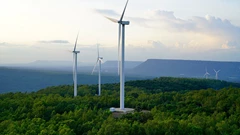
Longi Delays Solar Module Plant in China as Sector Struggles
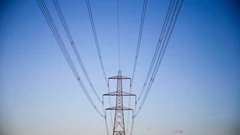
SSE Plans £22 Billion Investment to Bolster Scotland’s Grid
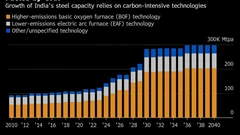
A Booming and Coal-Heavy Steel Sector Risks India’s Green Goals
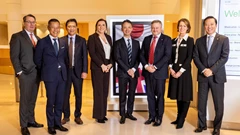
bp and JERA join forces to create global offshore wind joint venture
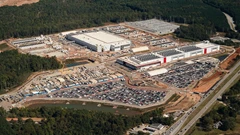
Blackstone’s Data-Center Ambitions School a City on AI Power Strains

Chevron Is Cutting Low-Carbon Spending by 25% Amid Belt Tightening
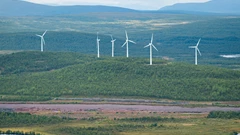
Free Green Power in Sweden Is Crippling Its Wind Industry

California Popularized Solar, But It's Behind Other States on Panels for Renters

A $50 Billion London Investor Takes a Contrarian View on Trump
















